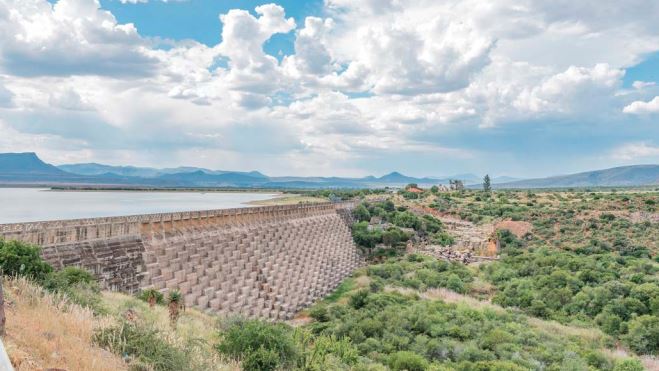Earlier this year, experts gathered under the umbrella of the National Dam Siltation Management
programme to garner the latest developments in the quest to improve water storage capacity of
South Africa’s dams. Matthew Hattingh reports.

When we non-specialists think of silted-up dams (indeed, when
we think of them at all) we picture in our mind’s eye great
expanses of desiccated mud, cracked and fissured beneath a
baking sun. But scratch the surface, or rather dig down a metre,
and a more promising picture beckons: water. Certainly, that’s
what a recent pre-feasibility study found at the Eastern Cape’s
Nqweba Dam.
When Nqweba (Xhosa for “meeting place”) was first completed
in 1925, known then as the Van Ryneveld’s Pass Dam, it had a full
supply capacity of nearly 79 million cubic metres. Fast-forward
to 2011 and its capacity had shrunk by 43%. Built for irrigation,
today, it cannot meet the domestic and industrial needs of the
nearby Karoo town of Graaff-Reinet.
The problem is not so much an absence of water as a surfeit of
silt. Fine sand and clay – from natural erosion, exacerbated by
overgrazing – carried by the Sundays River and its tributaries are
choking Nqweba. A similar story can be told of many of the 320
state-owned dams managed by the Department of Water and
Sanitation. Although siltation rates vary dramatically, on average
South Africa’s dams are losing capacity at a rate of 0.4% a year
with consequences for water and food security, particularly
during drought.
What’s to be done?
The department has long supported surveys and studies to
better understand a problem that is far from unique to South
Africa: Worldwide dams are losing 0.8% of their capacity a year.
And it underwrites the National Dam Silt Management (NatSilt)
Read More


